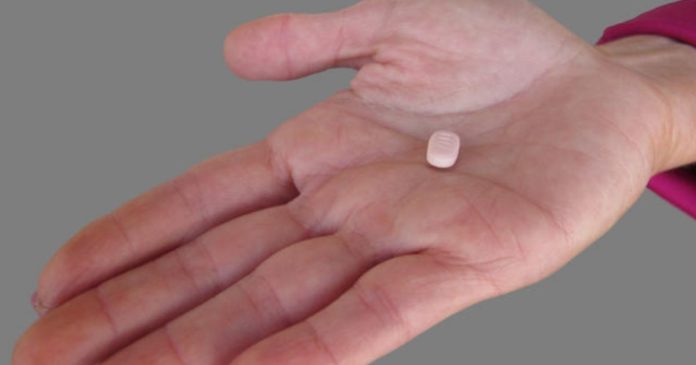
The U.S. Food and Drug Administration (FDA) this week gave final approval to the first-ever drug aimed at increasing sexual desire in women.
Often referred to as “female Viagra” or “pink Viagra”, the drug, Flibanserin, will become available via prescription by Oct. 17 under the name Addyi. The pink pill aims to enhance libido in women suffering sexual dysfunction, and is the only treatment of its kind to win approval from the FDA.
But while its introduction to the U.S. has generated a great deal of excitement, it hasn’t come without controversy – there is widespread skepticism about its effectiveness, and the side effects can be pretty serious.
So, what is Flibanserin exactly, and why has it caused such a stir? Here are five things you should know about the new drug.
“Female Viagra” is actually nothing like Viagra
Unlike Viagra, which men take immediately before a sexual encounter, Flibanserin is taken daily before bedtime. But the drugs are different in more ways than one. Viagra works by increasing blood flow to the genitals, while Flibanserin impacts brain chemicals. And while Viagra helps sexual performance, Flibanserin increases sexual desire.
It is meant for women with hypoactive sexual desire disorder
Flibanserin was approved to treat generalized hypoactive sexual desire disorder (HSDD), the most common cause of female sexual dysfunction. Affecting about one in ten women, HSDD is characterized by “persistent or recurrent lack of interest in sex” that is serious enough to cause personal distress.
The most recent edition of the Diagnostic and Statistical Manual of Mental Disorders, the DSM-5, which came out in 2013, changed the way sexual dysfunctions are classified, and HSDD is no longer a standalone diagnosis. Now it’s part of a new condition, called female sexual interest/arousal disorder (FSIAD). The characteristics of the disorder are the same, though: It has to be ongoing and lead to serious distress, and it can’t be directly caused by a non-sexual mental disorder, severe relationship distress (like abuse or infidelity) or other stressors, or a drug or other medical condition.
It was originally meant to be an antidepressant
Flibanserin was first developed as an antidepressant. The original manufacturer, German pharmaceutical group Boehringer Ingelheim, changed course after noticing that women taking the drug in studies started having more sexual thoughts. Boehringer Ingelheim then sold the patent to Sprout Pharmaceuticals — the current owner of Flibanserin — after the FDA’s first review.
The drug targets key neurotransmitters involved in depression, many of which also affect sexual desire. According to a 2014 review, “Flibanserin increases dopamine and norepinephrine, both responsible for sexual excitement, and decreases serotonin, responsible for sexual inhibition.
There are questions about its effectiveness
The evidence presented to the FDA committee about the effectiveness of Flibanserin was not compelling. Only 8 to 13 percent of women who took the drug saw any noticeable improvement over the placebo. That’s a pretty small number, particularly when you consider how “improvement” has been defined.
Specifically, according to the FDA, women who took the Flibanserin pill experienced, on average, just 0.5 more “sexually satisfying events” per month. While this is greater than those taking a placebo pill, that’s not boost — especially once you consider the potential side-effects.
The side effects are no joke
No drug is without side effects. But every medicine is a balance of risks and benefits. And given that flibanserin doesn’t seem to do all that much to alter women’s sex drives, there’s a big question about whether its side effects are worth the risk. In fact, flibanserin has been described as a “mediocre aphrodisiac with scary side effects”.
Around one in five of those who take Flibanserin experience one or more of the following side effects: fainting, low blood pressure, drowsiness, and dizziness. What’s worse, these side effects are exacerbated when the drug is taken with alcohol and hormonal contraceptives — and many, many women drink alcohol and use these types of birth control.
The adverse effects of mixing Flibanserin with alcohol are so serious that the drug will be sold with a black box warning to underscore the risks, which can include sudden loss of consciousness.
“Because of a potentially serious interaction with alcohol, treatment with Addyi will only be available through certified health care professionals and certified pharmacies,” Dr. Janet Woodcock, M.D., director of the FDA’s Center for Drug Evaluation and Research (CDER) said in a press release. “Patients and prescribers should fully understand the risks associated with the use of Addyi before considering treatment.”
